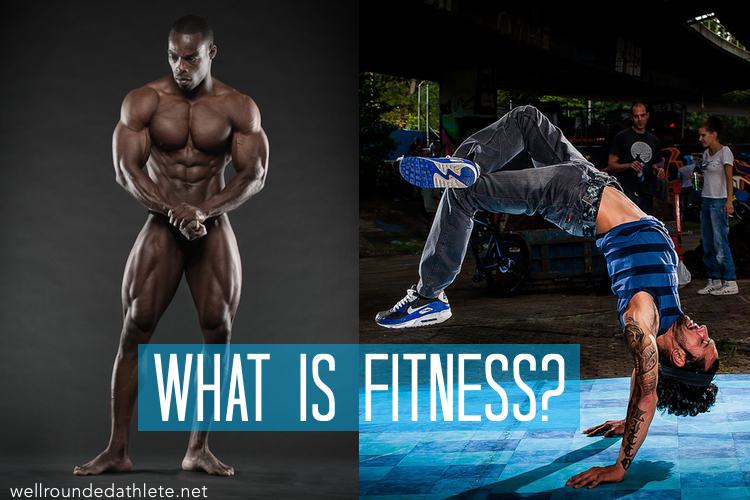In our modern society, the term “fitness” has become ubiquitous, often used interchangeably with concepts like physical activity, exercise, and overall well-being. However, the true essence of fitness extends far beyond the narrow confines of the gym or the treadmill. It encompasses a holistic understanding of how our bodies move, adapt, and thrive in a constantly changing environment. This article delves into the depths of what fitness truly means, contrasting the traditional notion of “fitness” with the more comprehensive concept of “movement intelligence.”
Traditional View of “Fitness”
Pursuit of Aesthetics
Traditionally, the term “fitness” has been intrinsically linked with the pursuit of a specific physical aesthetic. The media bombards us with images of chiseled physiques, six-pack abs, and toned bodies, often perpetuating the belief that these outward appearances are the ultimate markers of fitness. However, this narrow focus on aesthetics overlooks the deeper, more fundamental aspects of what it truly means to be fit.
Gym-Centric Mindset
The gym culture has heavily influenced the traditional view of fitness. While gyms serve as excellent facilities for structured exercise, they can inadvertently promote a limited perspective on fitness. The emphasis is often placed on specific exercises, weight training routines, and aerobic activities within the confines of the gym environment. This gym-centric mindset can potentially lead to a disconnection from the broader context of how our bodies move and function in the real world.
Quantification Obsession
Another hallmark of the traditional fitness mindset is the obsession with quantification. We measure our progress by counting reps, tracking calories, monitoring heart rates, and obsessing over numbers on a scale. While quantifiable metrics can provide valuable feedback, an over-reliance on them can distract us from the more qualitative aspects of fitness, such as overall movement quality, functional strength, and bodily awareness.
Movement Intelligence: A Holistic Approach
Understanding Human Movement
Movement intelligence is a holistic approach that recognizes the intricate interplay between our bodies, minds, and environments. It acknowledges that human movement is a complex symphony of neural pathways, muscle coordination, proprioception (spatial awareness), and environmental adaptation. By developing a deeper understanding of how our bodies move, we can unlock a world of possibilities that extend far beyond the confines of traditional fitness routines.
Functional Strength and Mobility
At the core of movement intelligence lies the pursuit of functional strength and mobility. Rather than isolating specific muscle groups or adhering to rigid exercise routines, the focus shifts to developing the ability to move efficiently, with fluidity and control, in a variety of real-world situations. This encompasses everything from carrying groceries, climbing stairs, or playing with children to engaging in recreational activities or responding to unexpected physical challenges.
Proprioception and Body Awareness
Proprioception, or the awareness of our body’s position and movement in space, is a crucial component of movement intelligence. By cultivating proprioception through mindful practices like yoga, martial arts, or even dance, we can enhance our ability to move with grace, control, and efficiency. This heightened body awareness not only improves physical performance but also reduces the risk of injury and promotes overall well-being.
Benefits of Movement Intelligence
Injury Prevention and Rehabilitation
One of the most significant benefits of developing movement intelligence is its potential for injury prevention and rehabilitation. By understanding the intricate mechanics of human movement, we can identify and address imbalances, weaknesses, or dysfunctional movement patterns before they lead to more severe issues. Additionally, a focus on functional strength and mobility can aid in the recovery process after an injury, helping individuals regain full range of motion and restore proper movement patterns.
Improved Coordination and Athleticism
Movement intelligence extends beyond the realm of injury prevention and rehabilitation. It also enhances overall coordination and athleticism, regardless of one’s chosen sport or physical activity. By developing a keen sense of body awareness and control, individuals can improve their agility, balance, and reaction time, leading to better overall athletic performance.
Longevity and Quality of Life
Perhaps the most significant benefit of movement intelligence is its potential to promote longevity and enhance overall quality of life. By cultivating functional strength, mobility, and body awareness, we equip ourselves with the tools necessary to navigate the physical demands of daily living, even as we age. This holistic approach to fitness can help prevent or mitigate age-related health issues, ensuring that we remain active, independent, and able to engage with life’s experiences fully.
Integrating Movement Intelligence into Daily Life
Mindful Movement Practices
Incorporating mindful movement practices into our daily routines is an excellent way to cultivate movement intelligence. Disciplines like yoga, tai chi, or qigong not only promote physical strength and flexibility but also foster a deeper connection between the mind and body. By practicing mindful movement, we learn to tune into our bodies’ subtle cues, cultivating a heightened awareness of how we move and breathe.
Functional Fitness Training
Functional fitness training is an approach that aligns perfectly with the principles of movement intelligence. This type of training emphasizes compound movements that engage multiple muscle groups and mimic real-life activities. Examples include squats, lunges, push-ups, and exercises that challenge balance and coordination. By incorporating functional fitness into our routines, we can develop the strength and mobility necessary to navigate the demands of everyday life with ease.
Outdoor Activities and Play
Engaging in outdoor activities and play can also contribute to the development of movement intelligence. Activities like hiking, rock climbing, or even playing sports with friends and family encourage us to adapt to varying terrains, navigate obstacles, and respond to dynamic environments. This exposure to diverse physical challenges can help us refine our movement patterns, improve proprioception, and cultivate a deeper appreciation for the capabilities of our bodies.
Additional Data and Statistics
- According to the American Council on Exercise (ACE), functional fitness training can improve balance, coordination, and overall strength by up to 58% in as little as eight weeks.
- Research published in the Journal of Aging Research suggests that incorporating mindful movement practices like yoga and tai chi can enhance cognitive function, improve balance and gait, and reduce the risk of falls in older adults.
- A study conducted by the University of California, Los Angeles (UCLA) found that individuals who engage in outdoor activities and play have higher levels of physical activity, better mental well-being, and a lower risk of developing chronic diseases.
- The National Health Interview Survey (NHIS) reported that only 23% of adults in the United States meet the recommended guidelines for aerobic and muscle-strengthening activities, highlighting the need for a more holistic and functional approach to fitness.
People, Also Search
Is movement intelligence only relevant for athletes or fitness enthusiasts?
- No, movement intelligence is beneficial for individuals of all ages and activity levels. Developing a better understanding of how our bodies move and function can enhance our overall quality of life, regardless of our athletic pursuits or fitness goals.
Can traditional gym workouts contribute to movement intelligence?
- While conventional gym workouts can be valuable components of a well-rounded fitness routine, they should be complemented by other practices that cultivate functional strength, mobility, and body awareness. Incorporating mindful movement practices, functional fitness training, and engaging in diverse physical activities can help bridge the gap between gym workouts and movement intelligence.
Is it necessary to have a background in specific disciplines like yoga or martial arts to develop movement intelligence?
- Actually, a background in particular disciplines is optional for developing movement intelligence. However, exploring practices like yoga, martial arts, or dance can provide valuable insights and techniques for enhancing body awareness, proprioception, and overall movement quality.
How can individuals with limited mobility or physical limitations incorporate movement intelligence into their lives?
- Movement intelligence is accessible to individuals of all abilities and mobility levels. Consulting with qualified professionals, such as physical therapists or certified trainers, can help tailor specific exercises and practices to individual needs and limitations. The key is to focus on functional movements and activities that promote body awareness and overall well-being within one’s capabilities.
Can movement intelligence benefit individuals recovering from injuries?
- Absolutely. Movement intelligence can be an invaluable asset in the rehabilitation process after an injury. By emphasizing functional strength, mobility, and body awareness, individuals can regain proper movement patterns, reduce the risk of re-injury, and enhance their overall recovery.
Concluding Lines
In our quest for fitness and well-being, it is essential to shift our perspective from the narrow confines of traditional “fitness” to the more holistic and comprehensive concept of “movement intelligence.” Whether through mindful practices, functional training, or engaging in diverse physical activities, cultivating movement intelligence empowers us to move with grace, strength, and resilience, enabling us to navigate the demands of daily life with ease. Ultimately, this holistic approach to fitness not only enhances our physical capabilities but also contributes to our overall quality of life, promoting longevity, injury prevention, and a profound connection between our bodies and minds.


